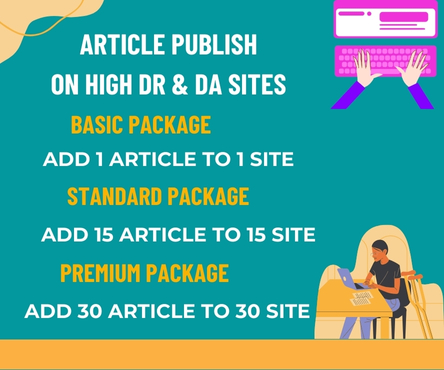In the boundless expanse of the internet, where websites stretch across the digital horizon like stars in the night sky, standing out is not just an ambition—it is a necessity. For e-commerce sites in particular, visibility determines viability. Your online store may be loaded with premium products, feature seamless UX design, and offer competitive pricing, but none of that matters if potential customers can’t find you. This is where SEO for online store becomes your most powerful compass on the digital highway.
Optimizing an e-commerce site for search engines is both an art and a science. It blends the technical precision of coding and algorithmic understanding with the human elements of storytelling, psychology, and marketing. When done well, it allows your site to glide smoothly into the top results of Google, Bing, and other search platforms—exactly where modern consumers begin their shopping journeys.
The Foundation: Technical SEO
Like the steel frame of a skyscraper, technical SEO provides the invisible strength behind a site’s visibility. It begins with site structure—a logical, crawlable architecture that search engine bots can navigate with ease. Categories should be clearly defined, products grouped intuitively, and internal linking consistent. This not only helps Google understand your site but also enhances user navigation.
Speed is equally crucial. A one-second delay in load time can reduce conversions by 7%. Compress images, leverage browser caching, and use content delivery networks (CDNs) to keep load times under three seconds. Mobile responsiveness is no longer optional either; with the majority of online shopping now occurring on smartphones, Google’s mobile-first indexing rewards mobile-optimized sites with higher rankings.
Secure your site with HTTPS encryption. Not only does it protect user data, but Google explicitly favors secure websites in its ranking algorithm.
The Language of Search: Keywords and Content
Keywords are the language of search engines. These are the words and phrases that users type when looking for products. But stuffing your pages with generic, high-volume keywords won’t cut it. You need intent-based, long-tail keywords—the kind that reflect what your customers actually want. Instead of “running shoes,” target phrases like “best lightweight trail running shoes for women.”
Conduct keyword research using tools like Ahrefs, SEMrush, or Google Keyword Planner. Pay attention to your competitors, search volume, and keyword difficulty. But don’t stop at product titles and descriptions—optimize meta titles, meta descriptions, header tags (H1, H2, H3), and image alt texts.
The soul of SEO lies in content. Create compelling product descriptions that are not only informative but emotionally engaging. Craft blog posts that answer customer questions, solve problems, and offer value beyond selling. A running shoe store might publish a guide on “Choosing the Right Shoe for Your Running Style.” Content like this not only ranks well but earns trust and loyalty.
The Power of UX and Engagement
Search engines are becoming increasingly human-like in their judgment. They don’t just look at keywords—they assess how users interact with your site. Do visitors stay and browse, or do they bounce back quickly? This is where user experience (UX) becomes pivotal.
A clutter-free layout, easy navigation, clear CTAs, and minimal pop-ups contribute to a better user journey. Incorporate customer reviews, Q&A sections, and even user-generated content like photos and testimonials. These features build credibility and keep visitors engaged, signaling to search engines that your site is valuable.
Implement schema markup to help search engines better understand your content. It can enhance your listings with rich snippets like star ratings, product prices, and availability—making your links more attractive and clickable.
Backlinks: Building Your Site’s Authority
In the world of SEO, backlinks are akin to votes of confidence. When reputable websites link to your e-commerce store, search engines interpret it as a sign of trustworthiness and authority. But not all backlinks are created equal. A link from an industry publication or high-authority blog is worth far more than dozens of links from obscure directories.
Develop a strategic outreach plan. Collaborate with influencers, partner with relevant blogs, or offer guest posts with valuable insights. Engage in digital PR campaigns to get featured in online media. Tools like HARO (Help a Reporter Out) can connect you with journalists looking for expert quotes—an excellent opportunity to earn quality backlinks.
Analytics and Adaptation
SEO is not a one-time endeavor—it’s a living, breathing process that evolves alongside search engine algorithms and consumer behavior. Utilize tools like Google Analytics and Search Console to monitor your site’s performance. Which pages bring in the most traffic? Where are users dropping off? What search terms are converting?
Refine your strategy continuously. A/B test changes in product pages, update outdated content, and track your keyword rankings. Embrace an agile mindset, willing to adjust your approach based on real data and shifting trends.
The Human Element
Despite its technical roots, SEO remains deeply human. At its heart, it’s about understanding your customers—how they think, what they need, and how they search. Optimize not for algorithms, but for people. Tell stories, answer questions, be helpful. When you design your SEO strategy around empathy and value, search engines will follow suit.
The Journey Ahead
The digital highway is ever-expanding, with new competitors merging into the fast lane each day. But with a thoughtful, comprehensive SEO strategy, your e-commerce store can confidently navigate this road, rising in visibility and value.
Remember: SEO is not about tricking search engines. It’s about partnering with them to offer the most relevant, meaningful experience for your audience. When your products meet your customer’s intent, and your site offers seamless usability and trusted authority, you’re not just optimizing—you’re thriving.
Welcome to the future of e-commerce. The on-ramp is open. The highway awaits.

